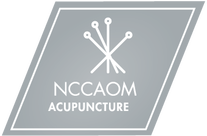 Source: Pexels.com Source: Pexels.com
As you begin reading this article, what position is your body in? Are you sitting down, standing up, lying down, or walking down the street perhaps? Whatever position you are in, stop and observe your posture. Would you consider this position “good posture”? If not, what would you change and how?
Chances are after reading these questions, you made an adjustment to your posture or at the very least thought about it. Here are two more questions for you.
As a health professional working in the industry for 20 years, I am stunned by the countless people suffering from the posture they are placing themselves in day after day. Of course, though, “bad posture” does not occur overnight, it takes time. Our bodies are built with protective mechanisms that help us unconsciously compensate through postural adjustment for injuries that make it difficult to place our bodies in certain static positions or move through normal ranges of motion. These mechanisms become learned responses that, if the injury requires a longer healing time, move towards becoming an unknown habit. Take this patient, for example: Jennifer is a typical middle-aged office worker who spends the majority of her work week in a chair staring at a computer screen and sitting in back-to-back meetings. She decided to visit me for neck pain that comes and goes and ranges in severity from a 2 to an 8 out of 10. When she first arrived, I noticed that her head shifted off to one side just slightly, but I did not bring it to her attention right away. Interestingly, the direction her head shifted was towards the same side she was experiencing the neck pain. Later in our conversation, I brought this observation to her attention and she didn’t believe me, until I asked her to look in the mirror. She was absolutely shocked that she never noticed it before and even more shocked that all of the health practitioners she had been to for the pain had not seen it either. It was obviously too subtle for her to notice, and furthermore, it didn’t feel out of the ordinary.
What was the cause? It turns out, while using her computer at work for long periods of time, she would often get tired quickly and lean to the right side onto her desk while she maneuvered the computer mouse with her right hand. Over time, this change in position, due simply to lassitude, unconsciously formed into a debilitating habit. Aside from this, there was no other indication, past or present, that pointed to an event that might have led to the neck pain. Furthermore, she had been at the same job for nearly 15 years. She is lucky that all she had was neck pain!
Our posture determines not only what types of aches and pains develop, it also affects specific aspects of our physical and mental well-being, such as our breathing, our digestion, our balance, and not to mention, our mood. Emotionally, if you feel constantly depressed or upset, your posture will change to reflect this. And by holding on to this emotional stressor, you will find yourself letting go of “good posture”.
In Oriental Medicine, posture will determine the quality of Qi and Blood circulation throughout the body. In the example above, Jennifer experienced one-sided neck pain that began to radiate to other areas like her upper back and affected the big picture of her overall posture forcing her to reposition her body more so to one side rather than being balanced in the center. She allowed for weakness to develop on one side and severe regional tension on the other. Needless to say, the quality of Qi and Blood circulation easily transformed into stagnation and excess on one side with a deficiency on the opposite side. Had we not addressed it when we had, it might have reached the point of stasis or an even worse condition. As an acupuncturist, I am always analyzing my patients’ posture every time they come for treatment. If something stands out, I tell them directly, and we work on it from head to toe. We look together at how they stand, how they sit, and how they walk. When they lie down on the treatment table, I observe what position they place themselves and also where they end up (on the table) by the end of the session, if the tools being used are not forcing them to remain in one position. Understanding one’s posture is the key to understanding one’s health. And healthy posture is the gateway to good health in addition to providing you with more energy. Here are a few basic tips for examining posture from head to toe. You can easily do these yourself or prescribe them to your patients.
How do you feel? If you feel slightly uncomfortable, that sounds about right. You probably need a little more practice to help your body adjust to this new “normal”. But over time, you will notice a significant difference in how you feel, the amount of energy you have, and maybe even how you look! Don’t believe me? Go look in the mirror.
0 Comments
|
Posted here are...inspirational ideas on healthy living through eastern medicine, optimism, and possibility through empowerment. Archives
March 2020
Categories
All
|
HOURS & LocationMondays-Thursdays 5:30-6:30pm (Tai Chi & Qigong only)
Fridays 5:00-6:00pm (Tai Chi & Qigong only) Saturdays 1:00-6:00pm (Acupuncture only) |
CONTACT Us |



 RSS Feed
RSS Feed



